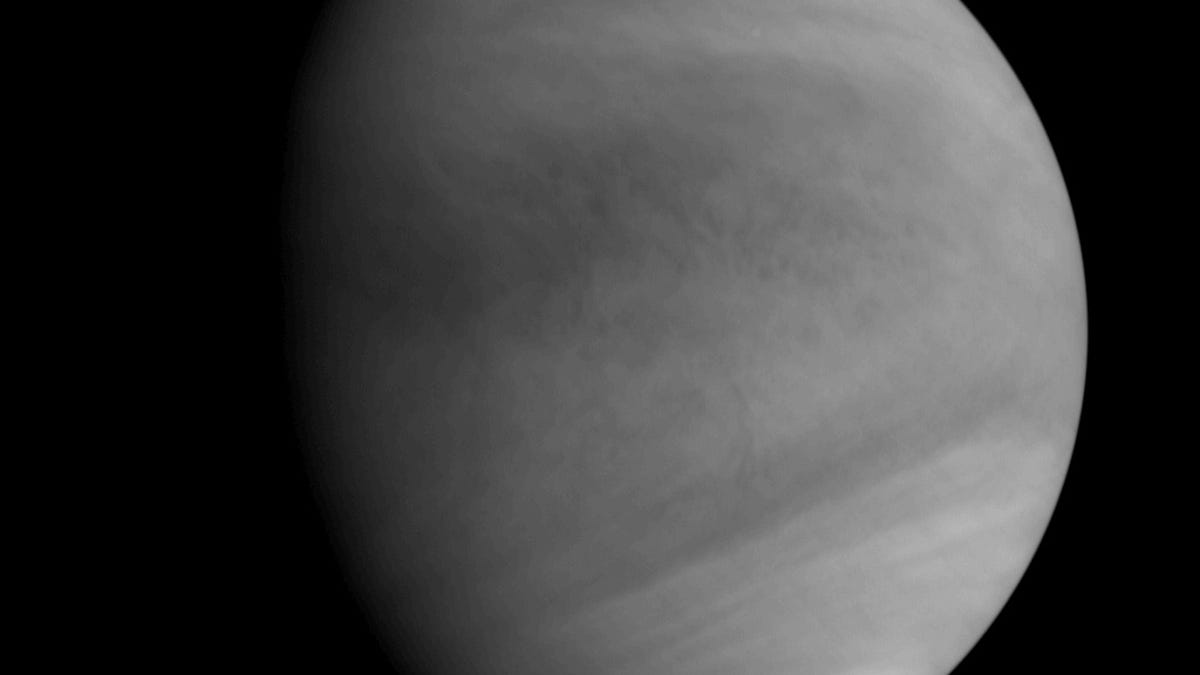Japan's Akatsuki orbiter sends back triumphant Venus images
Years after a failed attempt at orbiting Venus, the Akatsuki spacecraft snuggles up next to the planet and snaps a series of photos.
The Japan Aerospace Exploration Agency (JAXA) has every reason to celebrate right now. Back in 2010, the agency's Venus Climate Orbiter, known by the name Akatsuki ("dawn"), failed to make it into orbit around Venus. It was a big miss for a mission focused on observing the second planet from the sun.
It took five years of maneuvering to bring the space probe back into position for another shot. On Wednesday, JAXA confirmed Akatsuki's successful arrival in orbit.
JAXA reports the orbiter to be in good health. Its instruments are undergoing testing and will perform some initial observations of the planet.
The orbiter nudged into place on Monday, but JAXA issued the official confirmation of success Wednesday. Akatsuki deployed its cameras as it sidled up to Venus, giving us some fresh images to consider. The images are a bit fuzzy, but the planet's thick cloud layer is visible.
Akatsuki is currently orbiting Venus in the same direction as the planet's rotation and is on a schedule of about 13 days and 14 hours for each orbit period. JAXA will gradually adjust the probe's orbit to bring that down to about 9 days. That shorter orbit time will bring Akatsuki in closer to the planet and should help its instruments perform better.
Venus is not a pleasant place by Earthly standards. It's extremely hot and likely full of volcanic activity. In some ways, it's like a evil mirror-universe twin to our planet. NASA describes it as "similar in structure and size to Earth." The US space agency goes on to use words like "scorched," "toxic" and "temperatures hot enough to melt lead." It's not the sort of place you would want to visit in person.
According to JAXA, it's hoped the Akatsuki mission can learn more about the atmosphere and weather on Venus as well as confirm the presence of active volcanoes and thunder. The space agency is seeking answers as to why Earth and Venus developed so differently from each other, despite being seen as sister planets in some regards. Akatsuki's regular operations are scheduled to begin in April 2016.
Akatsuki captured this image of Venus on the day of its successful move into orbit.


